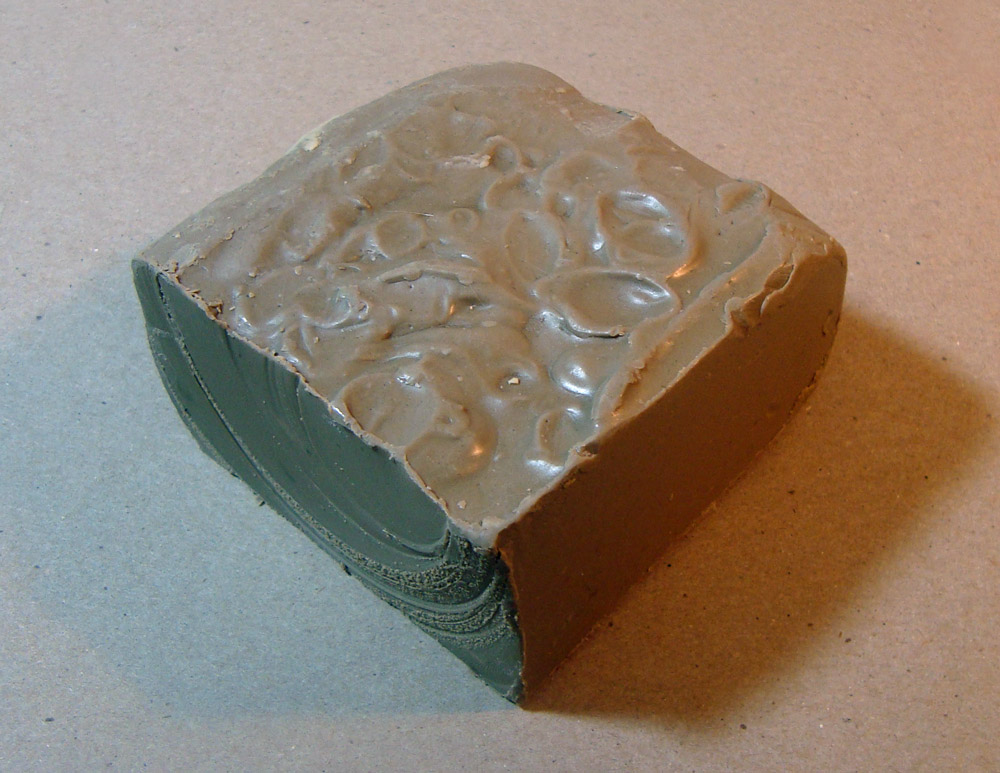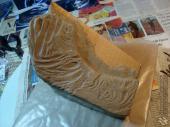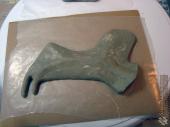Materials: Oil and Wax-based Clay

Clays made with a base of oil or wax (or a combination of both) are a type of sculpting medium that will never cure or harden completely. This makes them ideal for sculpting a large project that you may need to work on over a period of days or weeks. When the sculpture is complete, you make a mold from it, and then cast it to get your final piece.
I recommend Monster Clay. It is a sulfur-free clay made with a mixed base of oil and wax which can be used over and over again. Be sure to read the product promotional sheets for more information and to see many examples of this product in use.
The type of mold you make depends on what material you want to cast it with. You can use a soft mold (usually silicone) if you wish to cast it in a rigid material (like resin), or you can make a hard mold (plaster) if you wish to cast a soft material (like rubber latex). Because the clay doesn't harden, it is pretty easy to remove from a hard mold.
Oil and wax-based clay is sensitive to temperature. The cooler it is, the harder, and it softens as it heats up. In fact, heat it up enough and it will become a pour-able liquid. Be careful, as it is possible for the clay to get hot enough to burn you in this state! Be sure to read the specifications for the clay you're working with to find out how to oven-heat it safely.
This thermal sensitivity makes it very versatile for sculpting, though. Start with relatively warm clay as you begin your sculpture, and you can rough out the shape easily. You can warm the clay up by kneading it with your fingers or just holding it in your hands. Once you're done roughing out your sculpture, give it a couple of hours to cool down. Then, you can begin to do detail work on it without worrying about disfiguring the clay. You can warm it up just a bit (say, with a hair dryer) to add texture. Finally, let it cool down again to reduce the chance of damaging your sculpture during the molding process.
Tips
- If you have a small space heater, you can put a container of clay a few feet in front of it to warm it up. It doesn't take long for the clay to warm and soften, so keep an eye on it if you try this. You don't want it to go too soft.
- Loop tools are great for working with this kind of clay!
- Mineral spirits are effective in smoothing oil-based clay.
- If you are planning to make a mold from platinum-based silicone, make sure the clay you're using is sulfur-free. Clays with sulfur can keep platinum-based silicone from curing properly.
Here are some examples of parts of my Garrus mask sculpted in oil-based clay:
If you found this helpful, consider leaving us a tip or becoming a Patron! Your generosity helps our small business thrive.
Categories: Costuming, Materials and Tools, Tutorials, Materials, and Tools
Tags: clay, modeling, monster clay, oil-based, sculpt, sculpting, sculpture, wax-based
Live Date: 4/12/2013 |
Last Modified: 9/29/2022


